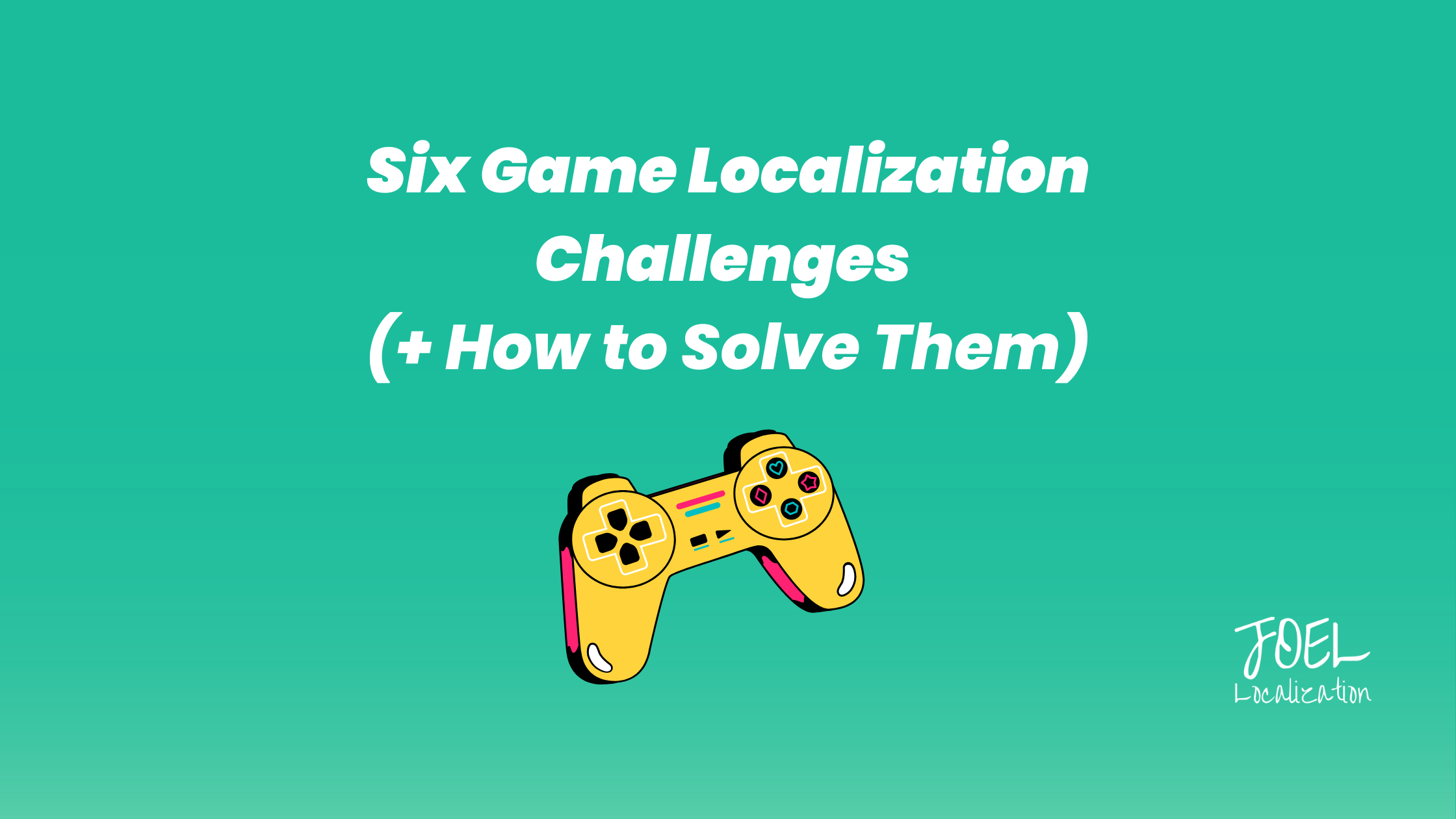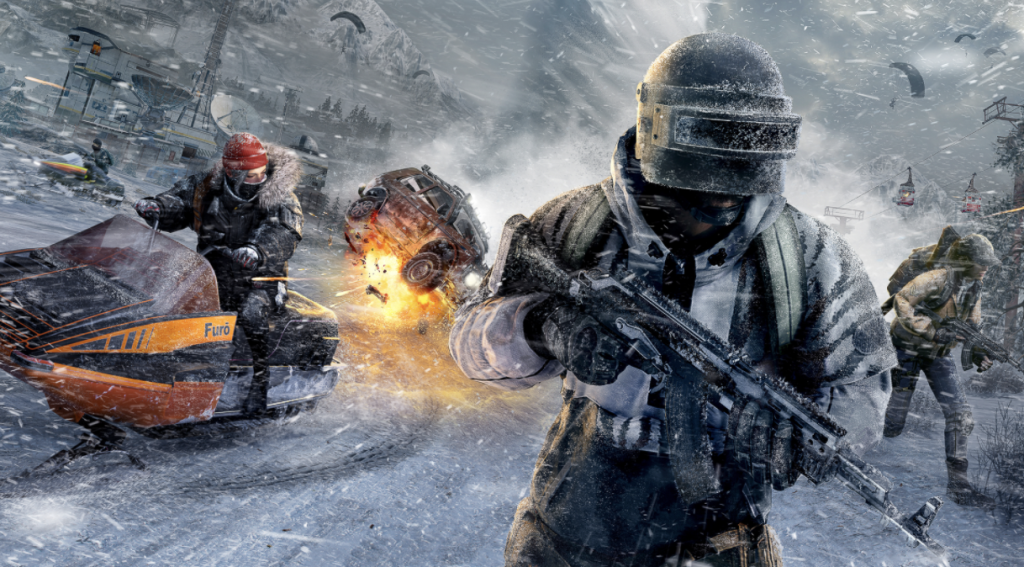
The global video game industry is booming, and it won’t stall anytime soon. Anything but, actually—the annual market growth rate will reach 10% in the next few years. That means it’s time to make sure your game hits the mark for international audiences.
Of course, the best way to do that is through game localization. Or, what we like to call the process of adapting video games to different languages, cultures, and regions.
Game localization is a term you should get familiar with because localizing your games is more important than ever. Especially in the Asia-Pacific region—home to half of all gamers worldwide. But, game translation and localization can be complex, and you will face many challenges getting your localized game to market.
Here are the six main problems you may run into when localizing your video game, and how to solve them.
1. Maintaining the game tone and style across different languages
Games have a unique tone and style that can be difficult to translate accurately. Just like games are unique, so are languages. Every language has its own nuances, expressions, and turns of phrases that vary greatly from one language to another. The last thing you want is a direct translation that fails to reflect the actual meaning and sentiment you want to convey. So, you will need translators who are creative and have a way with words.
Well, we say creative, but not too creative—because you will also want the translation to remain true to the tone and style of your game. It should sound and feel like your game, just written in a different language—without making it obvious that it has been localized.
Then, how do you do that?
👉 Solution:
- Create style guides for every language that your linguists can refer to when translating.
- Manage your translation memories regularly to make sure that nothing is out of date.
If you don’t have the time or resources to write a guide from scratch or do regular TM updates, there are agencies like JOEL Localization that would be happy to help you do so in an efficient and secure way that keeps your content safe.
2. Keeping consistency of terms
Games often contain a large number of specialized terms, like:
- Character names
- Locations
- Items and inventory
- Abilities and skills
- Achievements
- Game modes
- Dialogue options
- HUD (heads-up display elements)
- Multiplayer terms
- Health and damage values
These terms need to be identified and translated consistently across all languages to ensure that the game is coherent and understandable.
👉 Solution: Identify common terms and set up a translation glossary from the beginning. By having one document (or several) that can serve as the one source of truth for your entire game localization project, you will run into far fewer kinks in the process. When recruiting linguists, you should focus on game industry experience with specialized test kits to make sure you won’t have to spend costly time correcting errors in terminology.
3. Adjusting for text length constraints
Differences in word length and grammatical structure across languages can cause problems when translating and localizing games. A translation that fits comfortably within the text length constraints in one language may not fit at all in another language.
For example, the same phrase in English and German can have significantly different lengths due to differences in word structure and grammar. German words can be longer and more complex, which means that a translation of a phrase that fits within a dialogue box in English may not fit in the same space in German. This can cause issues with text overlapping, truncation, or even complete omission of important information.
Moreover, the location of each fragmented UI string in games is also constrained by the layout and formatting specifications, which means that the translation should not only fit within the space provided but also be positioned correctly to maintain proper context and readability.
👉 Solution: To address this issue, close communication between game developers and localization teams is necessary to ensure that the UI strings are designed with enough flexibility to accommodate variations in text length and that translations are tested thoroughly for layout and formatting issues. Additionally, Desktop Publishing (DTP) checks are required to ensure that the translated text fits properly within the designated space and that the layout remains appealing.
4. Taking into consideration cultural differences
Sometimes, games can contain content specific to a particular culture, such as:
- References to historic events
- Religious beliefs
- Social customers
- Pop culture
If you do not properly adapt these cultural elements to the target audience, it can lead to confusion and negatively affect the player’s experience in the market.
Do you see, for example, how this dialogue text from Final Fantasy II could have been better adapted for English audiences?

Don’t let that be your game.
👉 Solution: All members of your game localization team need to have a deep understanding of the cultural contexts of both the source and target languages and cultures. Only that will give them the know-how to replace cultural references with equivalent ones that are more familiar or relevant to the target audience, without losing the intended meaning or impact. Another solution is to provide context or explanations for cultural elements that may not be familiar to the target audience, such as through in-game glossaries, tutorials, or pop-up notes. Either way, you would need to select a local partner to help make your game localization a success. Ideally, a translation agency that specializes in game localization—and we suggest you choose wisely (no, we are not at all biased).
5. Lack of context for translators
Every translation project manager in existence will have heard this feedback from translators on their team, in some form or another: needs context.
It’s very true, especially for game localization. Translators may not have enough information about the game’s setting, characters, storyline, and gameplay mechanics to provide accurate and appropriate translations.
For example, a translator may not be able to accurately translate a dialogue line without knowing the relationship between the characters, their personalities, and the context of the scene. Likewise, a translator may not be able to translate a game mechanic without knowing how it works and how it relates to other game mechanics.
👉 Solution: Game developers and localization teams need to provide translators with as much context as possible to ensure that the translations are accurate, consistent, and appropriate.
This involves providing translators with access to the game’s design documents, character bios, storyboards, and gameplay demos, as well as briefings and meetings with the game development team to discuss any questions or concerns.
Another solution is to use translation software that allows translators to see the source text in context, such as in-game screenshots, video footage, or mock-ups, and to provide feedback or suggestions directly to the game development team.
6. Managing the localization project from end-to-end
Game localization projects have many moving parts. It involves coordinating and integrating multiple tasks and stakeholders across different languages, cultures, and time zones.
Without effective project management, game localization projects can face:
- Delays
- Cost overruns
- Quality issues
- Communication breakdowns
All of this can result in a negative impact on the game’s release and reception in the market.
👉 Solution: Establish a clear project plan and timeline, with defined roles, responsibilities, and communication channels. This involves identifying the project scope, target languages, deliverables, and deadlines, as well as establishing a project management system that allows all stakeholders to track progress, provide feedback, and resolve issues in real-time.
If you’re short-handed, JOEL Localization offers a turnkey solution that takes care of all your localization needs—designing and managing your game translation project from end to end.
Video Game Localization Example: PUBG
You may already be familiar with PUBG, the battle royale game that has developed into a cultural phenomenon.
Released just six years ago in South Korea, it has become a hit in markets far beyond its origins. Having sold more than 75 million copies, PUBG is fifth on the list of the best-selling games in the world.
For this, the developer can thank game localization. Now available in 17 different languages, it wouldn’t have been nearly as successful around the world if it had only been released in Korean.

Formerly Bluehole Inc., KRAFTON is the company that developed PUBG—and we are proud to count them among our clients at JOEL Localization.
You may also be interested in our tips for how to succeed at Korean localization.
Get your localized games to market with ease
Join the ranks of game developers like KRAFTON who rely on the translation services of JOEL Localization.
